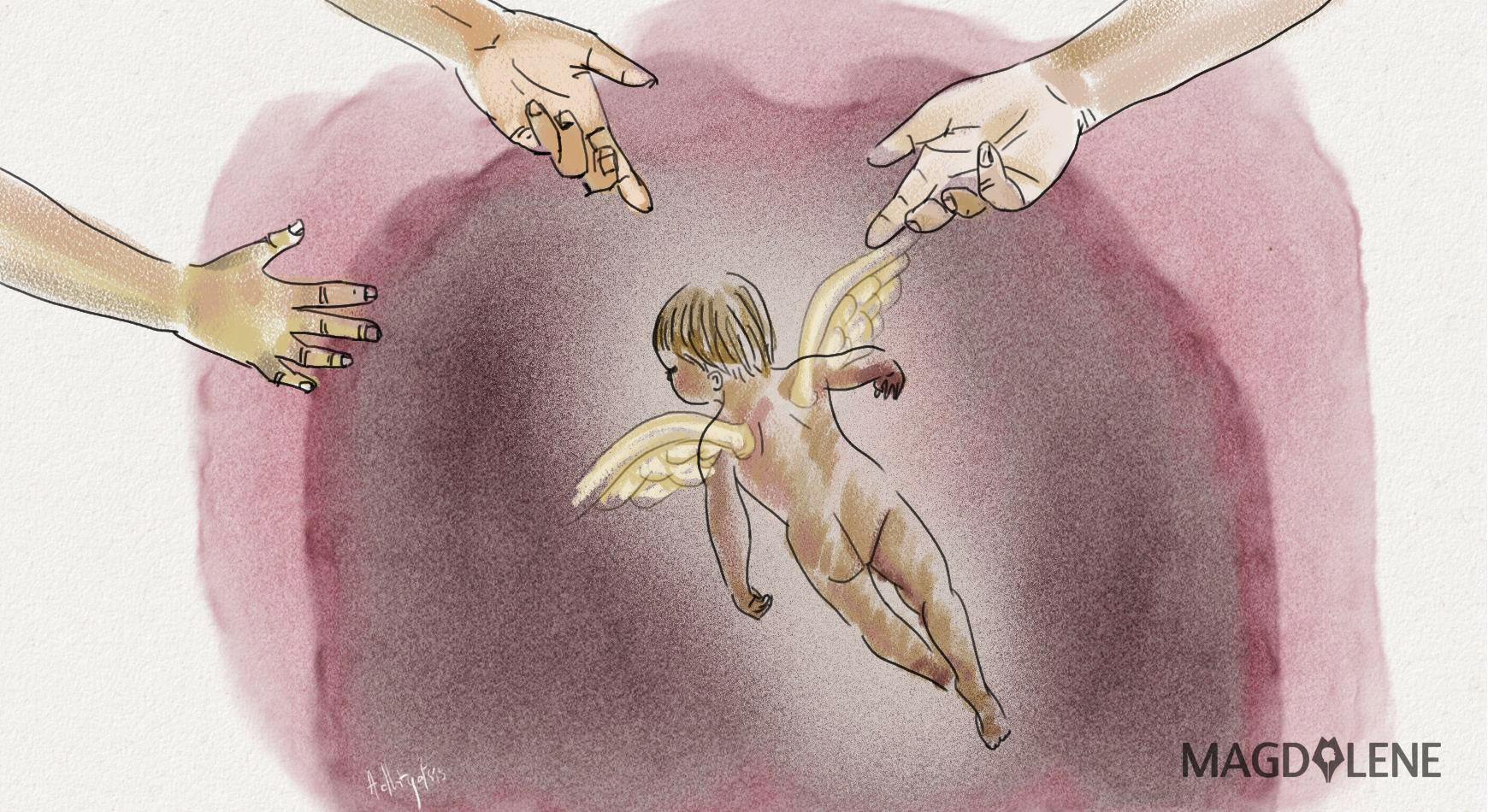Traveling on a dusty road in Qudsia Bagh, Old Delhi, in near 40°C weather to witness a baby being dropped off by unwanting parents gave me mixed feeling. I should’ve been more prepared, for I’ve been in India for weeks, but I guess not for everything.
A long and tall brick wall lines the road, and right in the middle of it is a little opening fits for only one wicker basket. The stretch of wall continues. It is designed discreetly so that nobody would notice when someone, in the dark of the night – or any time of the day – stops for a couple of minutes to put a baby in the basket and scoots off. The wicker basket is owned by Palna, a non-governmental organization for the abandon, homeless and destitute children that has been around since 1978.
When one places a baby in the basket, it will trigger an internal alarm to sound, informing a guard to step out to the sidewalk and a nurse to bring the child for medical check-up at Palna’s clinic. But they would wait for a minute or so before appearing to make sure the person has left after spending her or his last private moment with the baby.
The story of Palna
Palna started as a home for abandoned children after India’s partition, when riots and social migrations to Pakistan left many children displaced. Police that found lost or abandoned children at train stations or public areas brought them to the organization. The wicker basket, however, is a later initiative, after people began to leave their newborns in front of its door.
The children are cared and schooled by the organization using donation money until their biological families collect them, or until they are adopted by other families. For more than three decades, Palna has placed over 2,800 children to families after rigorous screening procedures.
Many infants left in the basket have mental or physical disabilities, but the glaring common feature they share is that most of them are girls. In the 1970s, nearly 90 percent of all the abandoned children were girls, but now the numbers lessen to only 70 percent. Although there is an improvement, arguably, the relatively high number speaks volumes on how boys are favored over girls.
It may be relieving that at least the girls in Palna home are alive, because according to economist and philosopher Amartya Sen (1990), there were more than 100 million girls missing in the world, due to sex-selective abortion, infanticide and relative neglect of girls’ health care. In India particularly, an assessment done by The Economist in 2011 calculated that 600,000 girls go missing every year.
Unlike China’s one-child policy, Indian parents abort female fetuses because they want to continue their family names. As family size has gotten smaller, parents prefer sons. Another reason is the cost of commonly grandiose wedding celebration and the dowry to pay to the husband-to-be’s family in order for their daughter not to be harassed in her future house. This is confirmed by at least two fathers I have met in my journey.
Keeping female fetuses alive
The missing girls phenomena compelled the Indian government to ban prenatal sex-determination by restricting ultrasound scan doctors to inform parents the sex of the fetuses, and prohibit sex-selective abortion. However, research by Hu and Schlosser (2011) revealed that prenatal sex-selection is actually improving girls’ welfare as those born are accepted and adequately supported by their parents, rather than left uncared for or dropped in a wicker basket in the middle of the road.
Nevertheless, the issue has sharpened the polarity separating the pro-cradle and anti-cradle advocates. Former Minister for Women and Child Development Renuka Choudhry is a known champion for proposing cradle-scheme in every district in India. Learning from the success story of Palna, the government began to open baby reception center in 1992. After the abandoned children are received by the government, it channels them to foster homes for adoption preparation.
However, Campaign Against Sex Selective Abortion (CASSA) demands the scheme to be repealed, arguing that cradle does not stop female infanticide. Moreover, CASSA deems government-provided cradle encourages child abandonment, reinforces low status for girls and supplies adoption agencies that may feed child trafficking and break the children’s connection with their roots, especially when the newborns are internationally adopted.
 Photo by Fitri Bintang Timur
Photo by Fitri Bintang TimurStill, there are stories of successful internationally adopted cradle children who returned to India to volunteer their skill to the development of abandoned children homes.
Asha Dijkastra is a Dutch in her 30s. She was abandoned, cared for by Palna and adopted by a foster family in the Netherland that provided her with education and support. Asha manages to keep her connection with India due to her name. As the babies arriving in baskets are often nameless, the staff at the foster home name them. These days, when Asha is having a break from her education consultant work in Holland, she visits Palna and takes the children for excursion.
Despite success stories like this, oppositions to the cradle-scheme were validated when research by Jeeva and Roopa (2011) found that the Indian government does not require adoption agencies to keep records of foster families and to conduct regular checks. With news of adoptive cradle children tortured by their foster parents and being used as child labor, the blame was placed on the carelessness of adoption agencies and their greed to sell abandoned children for profit.
Making better policy so daughters are equally wanted
In 2012, Indian government put a restriction for foster parents to donate money to adoption agencies to stop the “selling” of children. While the policy is based on good intention, it reduces the available funding for legitimate organizations like Palna that employ doctors, nurses, therapists, teachers and caregivers, amongst others.
Yet, it is not the issue of funding alone that has been troubling adoption organizations. The existence of child-selling agencies undermines their work, and the higher demand for boys than girls for adoption also puzzle them. This raises the need for social engineering to make girls and women equally wanted by society.
One country that has witnessed a dramatic change in its sex ratio at birth from boys-dominated to normal curve is South Korea. After the technology is said to trigger selective abortion, prenatal sex-determination is also banned by the South Korean government and the regulation is strictly enforced. However, the real changes in the country were led by social-economic policies.
South Korea’s economic growth in the 1980s through the 1990s introduces women to greater employment opportunities that increased their workforce participation and autonomy, contributing to an increased status and value of women. The country also improved the welfare system and retirement savings scheme that decrease reliance on patriarchal kinship system, which in turn fostered gender equality and lessened the preference for sons.
A 2007 research found that the “must have son”-attitude had dropped from 48 percent in 1985 to 17 percent in 2003. Interestingly, South Korean legal system stipulating that families ought to be headed by the eldest son was only reformed in 2005, after the mindset change occurred in the socio-economic domain.
Admittedly, there is no panacea. Policies that are successful in South Korea may not thrive elsewhere. Citing a World Bank data, female workforce participation rate in India has been steadily declining from 36 percent in 1993 to 27 percent in 2013 although the country is experiencing relatively positive GDP growth.
Doing it the South Korean style may not yet be an option for India. For now, the country is doing its best saving babies one cradle at a time.
Fitri Bintang Timur is a PhD student at Cranfield University, focusing on women and security.








Comments